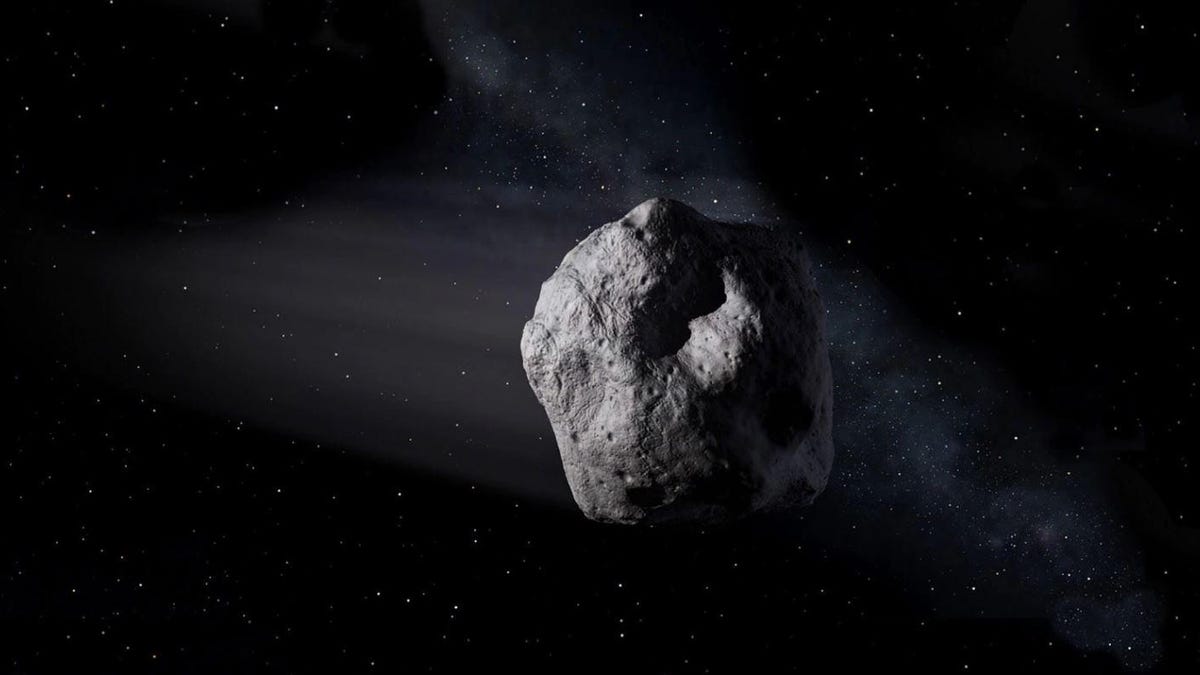Phew! Newly discovered asteroid isn't an Earth-smacking threat after all
We won't even have to duck when asteroid 2020 NK1 comes in for its closest approach.

Artist's concept of a near-earth asteroid.
The Earth's future can breathe a sigh of relief. A newly discovered asteroid the University of Central Florida said "was calculated to be one of the biggest threats out of all known asteroids on NASA's list of potential impactors" has been found to be safe.
The Arecibo Observatory in Puerto Rico rode out tropical storm Isaias and then went to work collecting data on asteroid 2020 NK1, which was first spotted in mid-July. Uncertainty about its path through space made it a high priority for NASA's watch list of potentially hazardous objects.
Arecibo Observatory captured this radar image of asteroid 2020 NK1 at the end of July.
Early observations estimated the asteroid to be 1,600 feet (490 meters) in diameter with a 1 in 70,000 chance of striking Earth between 2086 and 2101. This is where Arecibo's radar observations came in. The team was able to collect speed and distance measurements and even capture a radar image of the asteroid.
The new data shows 2020 NK1 will be giving Earth a wide berth. Even at its closest approach in 2043, it will still zip by at 2.25 million miles (3.6 million kilometers) away.
"It shows that we have very quick response times and high-precision range, motion and size measurement capabilities, in spite of storms, the COVID-19 pandemic and earthquakes with which Puerto Rico has dealt with this year," said Anne Virkki, head of the observatory's Planetary Radar Group.
The NASA Asteroid Watch Twitter account spread the good news on Friday.
New observations by @AreciboRadar, sponsored by @NASA's #PlanetaryDefense Coordination Office, confirm #asteroid 2020 NK1 poses no threat to Earth. Radar helps NASA track near-Earth objects to determine where they will be in the future and characterize their size and shape. https://t.co/boGcC0QzFI
— NASA Asteroid Watch (@AsteroidWatch) August 7, 2020
The identification and prompt tracking of 2020 NK1 is a testament to improvements in our planetary defense capabilities. Space rocks are passing by Earth all the time, and the ability to find them and determine their paths is critical to protecting the planet.
We can now relax and look forward to 2020 NK1's socially distanced visit a couple decades from now.

